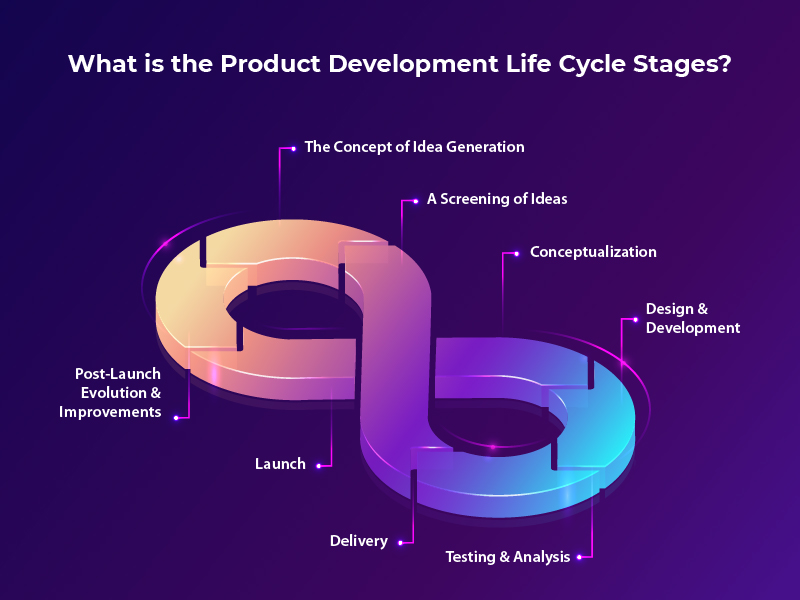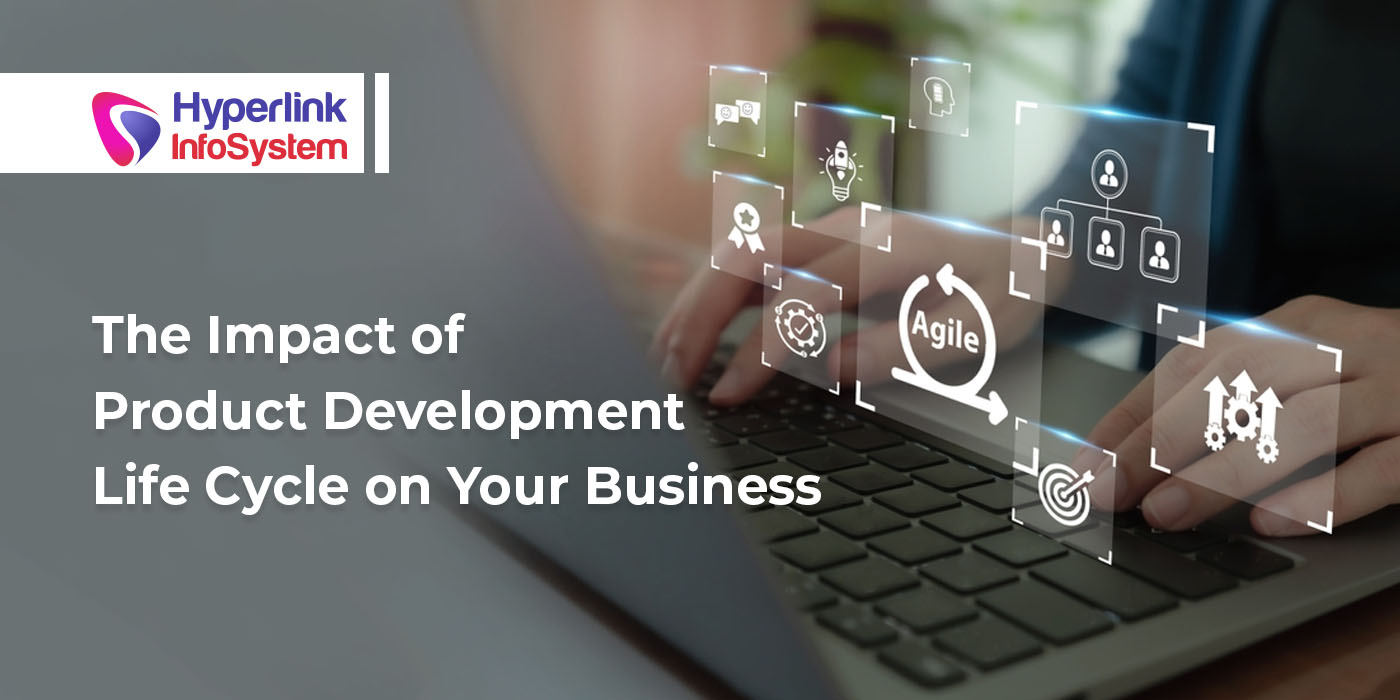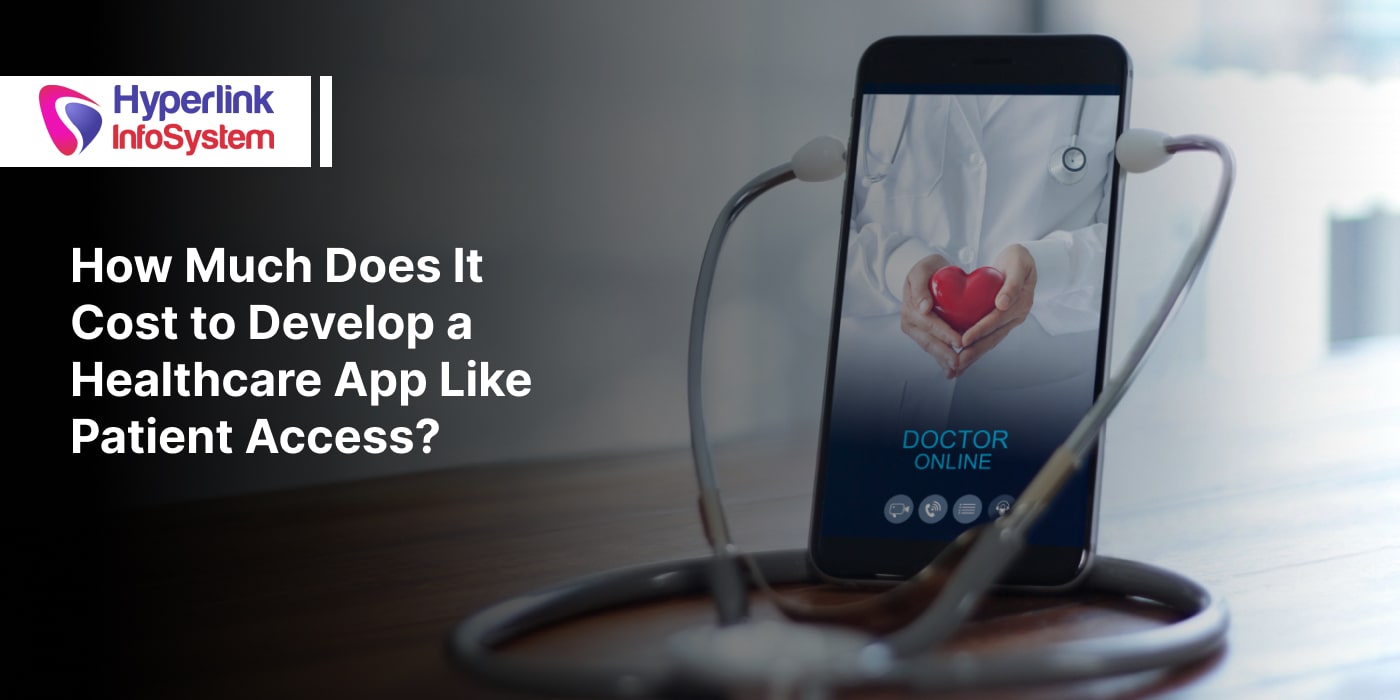In today's dynamic market, customers and market trends are constantly evolving. As new demands arise, businesses must adapt their services to meet the changing expectations of consumers. In the same way, products and software solutions cannot remain stagnant and must evolve to stay competitive.
To address these challenges, a product development life cycle is typically used to guide the process. This approach involves a series of steps and allows teams to remain flexible and adapt their plans as needed.
If you are planning to launch a new product, it is crucial to be familiar with the product development life cycle. By utilizing this widely-recognized strategy, you can develop a high-quality product that aligns with current market trends. A
software development company specializes in the development of software products for clients.
What is Product Development?
Product development is the process of designing, creating, and introducing new products or improving existing ones. It is a crucial aspect of any business that aims to stay competitive in the market and satisfy customers' changing needs and preferences.
Product development begins with identifying a gap in the market or a customer need that has not yet been fulfilled. The process includes conceptualizing, designing, prototyping, testing, and refining the product until it meets customer expectations and is ready for launch.
The success of a product development process relies on a combination of factors, including market research, customer feedback, technological advancements, and collaboration among various departments, such as marketing, design, engineering, and manufacturing.
Effective product development can help a business generate revenue, increase market share, and improve brand reputation. However, it also requires significant investment, resources, and risk-taking, as not all products will be successful in the market.
What is Product Development Life Cycle?
The product development life cycle (PDLC) is the process that a new product goes through from the initial idea to its eventual retirement from the market. It is a series of stages that a product undergoes to ensure that it is developed, designed, and launched successfully. The PDLC is an essential framework for businesses that want to create successful products that meet their customers' needs and wants. Dedicated developers are an essential component of any software development project. They are responsible for writing code, testing software, and debugging issues as they arise. You can hire a product manager who plays a critical role in the success of a software development project.
By following the PDLC, businesses can ensure that their products are developed systematically and efficiently. This approach helps to minimize the risk of failure and maximize the chances of success. The PDLC is a crucial tool for businesses to use when developing new products, as it enables them to create products that are both innovative and profitable.
What is the Product Development Life Cycle Stages?

The Concept of Idea Generation
Idea Generation is the first stage of the product development life cycle. It involves generating a pool of potential ideas that can be developed into products or services that meet a specific need or solve a problem. This stage is crucial because it sets the foundation for the entire product development process.
During Idea Generation, companies and individuals can use various methods to come up with new ideas, including brainstorming sessions, customer feedback, market research, and trend analysis. These methods help to identify customer needs and preferences, industry trends, and market gaps that can be filled with new products or services.
The goal of Idea Generation is to generate as many potential ideas as possible, without evaluating or filtering them. The aim is to create a large pool of ideas that can be reviewed and narrowed down later in the product development process. The ideas that make it through the initial screening process are then evaluated for their feasibility, market potential, profitability, and technical requirements.
A Screening of Ideas
Idea Screening is the second stage in the product development life cycle, which involves evaluating the potential of new product ideas and concepts to determine which ones should be further developed and which ones should be dropped.
During idea screening, a company typically generates a large number of product ideas through various sources, such as market research, customer feedback, internal brainstorming sessions, and competitor analysis. These ideas are then subjected to a preliminary screening process to identify the most promising ones based on a set of predetermined criteria.
The criteria used for idea screening can vary depending on the company's objectives, market conditions, and industry dynamics, but typically include factors such as market size, growth potential, competition, technical feasibility, financial viability, and strategic fit with the company's overall mission and goals.
Idea screening is a critical stage in the product development life cycle as it helps companies to focus their resources and efforts on the most promising product ideas and avoid wasting time and money on concepts that are unlikely to succeed in the marketplace.
Conceptualization
Conceptualization is the third stage of the product development life cycle, which comes after the ideation and feasibility analysis stages. It is an essential phase of the product development process, as it involves the creation of a detailed concept or idea for the product. During the conceptualization stage, the product team works on defining the product's features, design, functionality, and potential benefits. They conduct market research to identify the target audience, their needs, and preferences, as well as competitors and industry trends.
The team also develops a product roadmap and a product plan, which outlines the project's scope, timeline, resources, budget, and milestones. They may create prototypes, wireframes, or mockups to visualize the product's appearance and user experience.
Moreover, the team evaluates the feasibility and viability of the product concept, taking into account factors such as technical requirements, manufacturing costs, regulatory compliance, intellectual property, and environmental impact.
Once the product concept is fully developed and validated, the team moves to the next stage of the product development life cycle, which is the design and development stage. In this stage, they create a detailed design specification, build and test the product, and refine it based on feedback and testing results.
Design And Development
The fourth stage of the product development life cycle is the design and development stage. In this stage, the product concept that was developed in the previous stage is transformed into a tangible product design. The design process involves creating detailed specifications, determining the materials and components needed, and creating a prototype. The development process involves building and testing the prototype to ensure that it meets the required specifications.
During the design phase, engineers and designers work together to create a product that is not only functional but also aesthetically pleasing and user-friendly. They use computer-aided design (CAD) software to create 3D models and simulate how the product will function in real-world scenarios. The design team also considers factors such as manufacturability, cost, and safety when creating the product.
Once the product design has been finalized, the development team begins building the prototype. This involves sourcing materials, assembling components, and testing the product for performance and functionality. The team may go through multiple rounds of prototyping and testing to refine the product until it meets the required specifications.
Testing & Analysis
Testing and analysis is a critical stage in the product development life cycle where the product is thoroughly tested to ensure that it meets the desired quality standards and functions as intended. This stage typically occurs after the product has been designed and developed, but before it is released to the market.
During the testing and analysis stage, the product is subjected to a series of tests and evaluations to identify any defects or issues that may affect its performance or usability. These tests may include functional testing, performance testing, security testing, usability testing, and compatibility testing, among others.
The results of these tests are carefully analyzed by the development team to identify any areas where improvements or modifications may be needed. Based on the findings of the testing and analysis stage, the development team may make changes to the product design, software code, or hardware components to improve its quality, functionality, or user experience. A dedicated developer must have strong problem-solving skills, be able to work well in a team, and possess a deep understanding of software development best practices.
The testing and analysis are also important for identifying any potential risks associated with the product, such as security vulnerabilities or compliance issues. These risks can then be addressed before the product is released to the market, helping to ensure that it is safe and compliant with relevant regulations.
Delivery
The delivery stage of the product development life cycle is the final stage before the product is released to the market. This stage involves finalizing the product design, packaging, and marketing materials and preparing the product for distribution.
During the delivery stage, the development team works closely with the marketing and sales teams to ensure that the product is positioned and packaged in a way that appeals to the target audience. This may involve creating product demos, promotional videos, and other marketing materials to help generate interest and excitement around the product.
Once the product is ready for distribution, the development team will work with logistics and shipping partners to ensure that the product is delivered to customers in a timely and efficient manner. This may involve coordinating with warehouses and distribution centers to ensure that inventory is managed and shipped out on schedule.
In addition to logistical considerations, the delivery stage may also involve final quality control checks and testing to ensure that the product meets the required quality standards and functions as intended. This may include performing final user acceptance testing or conducting final security and compliance checks to ensure that the product is safe and compliant with relevant regulations. Dedicated developers are committed to delivering a high-quality product on time and within budget.
Launch
The "Launch" stage of the product development life cycle is the final stage in which the product is introduced to the market. This stage involves the execution of the marketing plan that was developed during the earlier stages of the product development life cycle.
During the Launch stage, the product is made available to customers through distribution channels, and advertising and promotional campaigns are executed to raise awareness of the product and generate demand. The focus during this stage is on maximizing sales and achieving the revenue goals set out in the marketing plan.
The Launch stage also involves monitoring customer feedback and market trends to ensure that the product is meeting customer needs and expectations. This feedback can be used to make improvements to the product, adjust marketing strategies, and inform future product development efforts.
Post-Launch Evolution & Improvements
The Post-Launch Evolution and Improvements stage is a crucial phase of the product development life cycle, occurring after a product has been launched into the market. This stage is focused on continuously improving the product and adapting it to meet changing customer needs and market trends.
During this stage, the company collects feedback from customers and analyzes market trends to identify areas where the product can be improved. The company may conduct surveys, focus groups, or other forms of market research to gather feedback and identify areas of improvement.
Based on this feedback, the company may make changes to the product, such as adding new features, improving the user experience, or addressing any issues or bugs that have been identified. The company may also adjust its marketing and advertising strategies to better reach its target audience and increase sales.
Continuous improvement is essential in this stage to keep the product competitive in the market and to maintain customer satisfaction. It is also important to regularly update the product to stay ahead of competitors and to remain relevant in the market.
Why Should You Know About the New Product Development Cycle?
Knowing about the new product development cycle is important for several reasons, including:
-
Understanding the new product development cycle allows companies to stay ahead of their competitors by introducing new products to the market faster and more efficiently.
-
By following a structured development cycle, companies can identify potential issues and address them early on, saving time and money in the long run.
-
Through the new product development cycle, companies can gather valuable feedback from customers during the development process, leading to products that better meet customer needs and preferences.
-
The new product development cycle encourages creativity and innovation, as companies strive to create new and better products to meet the changing needs of the market.
-
The new product development cycle allows companies to manage risk by identifying potential problems early on in the development process and addressing them before they become major issues.
Understanding the new product development cycle is essential for companies that want to stay competitive, reduce costs, satisfy customers, foster innovation, and manage risk effectively. You must hire a product manager for product development who is responsible for identifying market opportunities, defining product requirements, and guiding the development team in building high-quality software products.
Why Do Companies Require a Product Development Process?

Companies require a product development process for several reasons:
Ensure Quality
A well-defined product development process helps companies ensure that their products meet high standards of quality. By following a structured process, companies can identify and address potential issues early on in the development cycle, reducing the likelihood of defects and errors in the final product.
Manage Risk
Developing a new product is inherently risky, as there is always a chance that the product will fail to meet customer needs or fail in the market. A product development process helps companies manage this risk by providing a framework for assessing and mitigating potential risks throughout the development cycle.
Improve Efficiency
A structured product development process helps companies improve efficiency by ensuring that everyone involved in the development process understands their roles and responsibilities and that communication is clear and effective. This can help reduce delays and ensure that the product is developed and launched on schedule.
Optimize Resources
Product development can be resource-intensive, requiring significant investments of time, money, and expertise. A well-defined product development process helps companies optimize these resources by providing a framework for prioritizing tasks, allocating resources, and identifying opportunities for cost savings.
Benefits of Using the Product Development Life Cycle
The Product Development Life Cycle (PDLC) is a process that guides the development of new products from conception to launch. There are several benefits to using the PDLC, including:
-
The PDLC provides a structured and systematic approach to product development. This ensures that all important steps are taken and that the development process is well-managed.
-
The PDLC helps identify potential risks and allows for proactive risk management. This helps reduce the likelihood of product failure and protects the company from financial and reputational losses.
-
The PDLC can help reduce product development costs by identifying issues early in the process, allowing for timely course correction, and avoiding costly mistakes.
-
The PDLC helps ensure that products are developed to meet customer needs and are of high quality. This can lead to increased customer satisfaction and loyalty.
-
By providing a structured approach, the PDLC can help reduce the time it takes to develop and launch a product. This can be a significant competitive advantage in fast-moving markets.
Using the PDLC can help companies develop better products, reduce costs, and increase their competitiveness.
Difference Between PDLC and SDLC
PDLC (Product Development Life Cycle) and SDLC (Software Development Life Cycle) are both methodologies used in the development of products or software, but they differ in their approach and focus.
The
software development life cycle is a structured approach to software development that involves various stages such as planning, design, development, testing, and deployment. The software development life cycle provides a framework for managing software projects, ensuring that they are completed on time, within budget, and to the satisfaction of the client. Each stage of the software development life cycle requires specific skills and expertise to ensure that the project progresses smoothly and efficiently.
Here are the points of difference between PDLC and SDLC:
-
The primary difference between PDLC and SDLC is their focus. PDLC is focused on the entire product development process, from conception to launch, while SDLC is focused on the development of application software.
-
PDLC covers a broader range of activities, including market research, product design, prototyping, testing, manufacturing, and launch. On the other hand, SDLC is more focused on software design, coding, testing, and deployment.
-
PDLC places a higher emphasis on involving end-users throughout the product development process, from the initial design stage to the launch. SDLC is more focused on meeting the technical requirements and ensuring that the software is delivered on time and within budget.
-
PDLC is a more comprehensive methodology that covers the entire product development process, from ideation to launch, while SDLC is more focused on software development process. PDLC also involves more risk management, more significant involvement of end-users, and iterative development, while SDLC follows a linear approach with a greater emphasis on meeting technical requirements and staying within budget and time constraints.
Conclusion
The product development life cycle (PDLC) is a process that describes the stages a product goes through, from ideation to launch and beyond. It consists of several distinct phases, each with its own set of objectives, deliverables, and stakeholders. The PDLC begins with idea generation, followed by research and analysis, product design, development, testing, and launch. After launch, the product enters the post-launch phase, which includes ongoing support, maintenance, and eventual retirement. The PDLC is essential for organizations to ensure that products are developed efficiently and effectively, meet customer needs, and achieve business goals. By following a structured PDLC, companies can improve their chances of success and reduce the risks associated with product development.
The goal of a software development company is to provide clients with high-quality software products that meet their specific needs and requirements. As a software development company, Hyperlink InfoSystem has a dedicated developers team who work together to deliver high-quality software products, application software, and more on time and within budget. You can hire a product manager, as our successful product manager has strong leaders ship skills, can communicate effectively with stakeholders, and have a deep understanding of the industry and the target market. Successful software development companies have a deep understanding of software development best practices, employ the latest technologies, and provide excellent customer service.


























